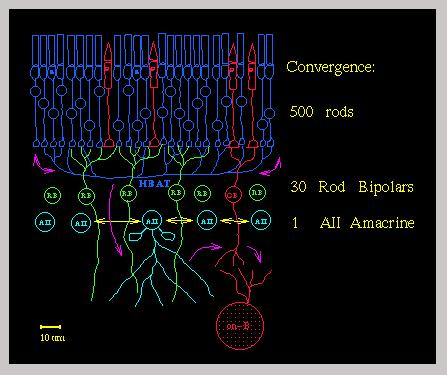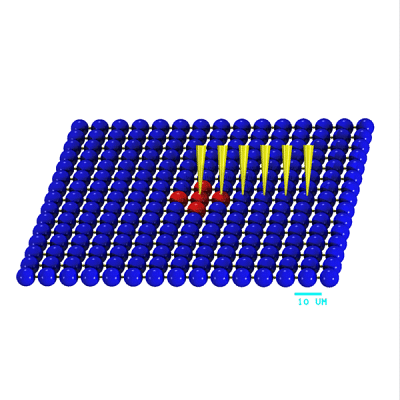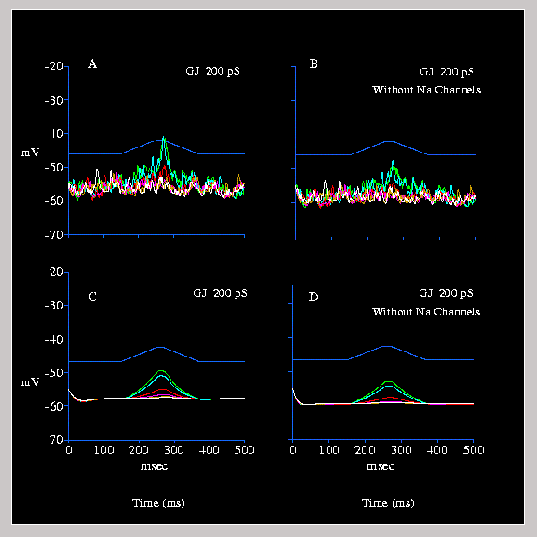

The AII cell collects from 500 rods converging in a series of 2 stages. 20 rods converge onto 1 rod bipolar cell, and 30 rod bipolars converge onto 1 AII cell. This circuit carries single-photon signals which are small (about 1 mV). The biologically-generated noise in the circuit would obscure single-photon signals if there was simple convergence, that is, with linear summation of all the rod signals into 1 AII cell. Therefore, at each stage, there is a nonlinear transformation performed by the neural circuit so that the noise is removed and the "quantal" single-photon signal is passed.

Each cell in the array received a noisy synaptic input from a presynaptic terminal (rod bipolar in vivo). The 5 most central cells (the red ones) received a "quantal photon event" through their synaptic inputs. Responses were recorded from 6 cells along a radius from the center cell.

On the left are responses from the network including Na+ channels, and on the right are the corresponding responses without Na+ channels. The bottom plots show the corresponding responses without noise. The Na+ channels tend to amplify the slow single-photon events, especially in the presence of noise.
Comments, questions, requests, etc., can be emailed to "rob@retina.anatomy.upenn.edu". -Rob